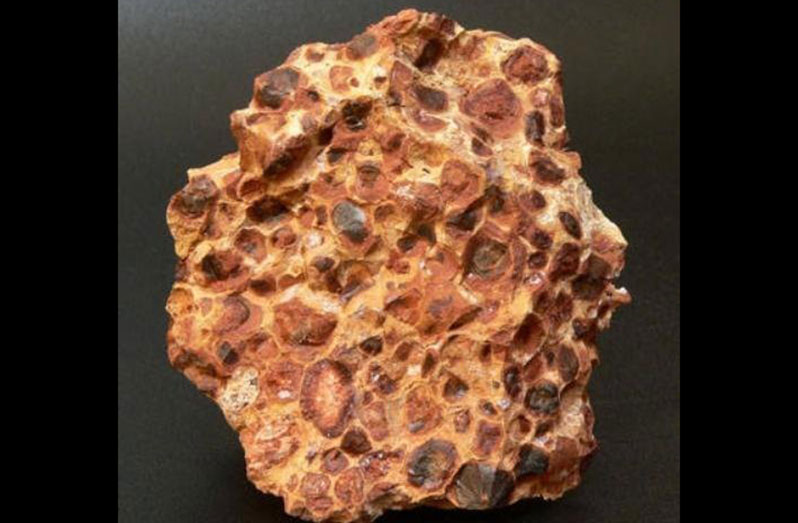–President Ali says
DESPITE past challenges, Guyana’s bauxite industry is poised to make a notable ‘comeback’, thanks to its substantial amounts of minerals yet to be extracted.
President Dr. Irfaan Ali, in his commemorative message for Guyana’s 52nd Republic Anniversary, estimated that the country’s bauxite reserves, alone, are worth close to US$1 billion.
He’d previously indicated that bauxite deposits along the Corentyne River, alone, can kickstart massive growth and development in Region Six (East Berbice-Corentyne).
The Head of State reasons that with government’s efforts to reduce the cost of electricity, the establishment of a smelter factory would not only be possible, but financially viable as well.
Simply put, smelting is a process which uses heat and a chemical-reducing agent to decompose the ore, thereby driving off other elements as gasses, or slag, and leaving just the metal behind.
Even further, President Ali pointed to the fact that a smelter operation would also present the need for an aluminium plant, which would convert the extracted bauxite into aluminium.
Although Guyana has been producing top-tier bauxite for decades, it is yet to become a notable aluminium producer; however, this could soon change, as the government pushes ahead to implement a comprehensive energy mix, using ‘renewables’ such as wind, solar, ‘hydro’ and natural gases to produce alternative energy, thereby making manufacturing investments feasible across a myriad of sectors.
President Ali had also hinted at the fact that aluminium production could be further supported by the establishment of an energy corridor, stretching along the Corentyne, and neighbouring Suriname and Brazil, respectively.

It was also reported that, currently, investors are eyeing Tarakuli bauxite deposits near Orealla, in Region Six. As a matter of fact, according to the government’s Department of Public Information (DPI), Minister of Natural Resources Vickram Bharrat has already gone ahead to engage those parties who may be interested in developing the Tarakuli bauxite mine located some 10 miles away from Orealla.
The Department quoted Minister Bharrat as saying that ‘Tarakuli’ is one of the largest such bauxite mines remaining in our country, and that it is yet untouched.
‘VERY HIGH QUALITY’
Not only that, the bauxite contained at that location is said to be “of very high quality,” based on a previous study alluded to by Minister Bharrat.
As such, this serves as yet another reason for the establishment of an aluminium plant.
“The aluminium plant will add value to our ore, because, for too long we have been exporting raw materials; we haven’t been exporting value-added products, and you would know when you export value-added products, you earn maybe ten times more than when you export the raw material,” the minister said, emphasising the fact that the government’s priority is adding value to its many products.
In the meantime, output in the bauxite mining subsector has declined by some 3.8 per cent, according to Senior Minister in Office of the President with responsibility for Finance Dr. Ashni Singh.
Last month, in his presentation of the administration’s $552.9 billion ‘oil budget,’ Dr. Singh said that the decline in bauxite production is linked to the unprecedented floods that affected Guyana during the May-June rains in 2021.
The disaster saw thousands of homes and farmlands being destroyed, while a number of mining operations were completely submerged, or, in some cases, washed away.
“In the latter half of the year, along with the effects of the continuous rainfall on the condition of access roads, and on mining operations, one of the large operators faced mechanical issues with some of its machinery, thereby resulting in output falling by an estimated 12.7 per cent below its 2020 performance,” Dr. Singh reported.
The minister explained, too, that in addition to the natural disaster, the decline in the bauxite industry was fuelled by the loss of one major producer in 2020, “as a result of the hostile investment environment at the time.” As he observed: “…bauxite mining continued with only two major operators.”
EXPECTED TO RECOVER
But despite the destruction, the minister said that bauxite production is expected to recover in 2022, with a projected growth of 25.4 per cent.
Already, Dr. Singh said, the larger of the two bauxite miners in Linden has initiated plans to expand investment in 2022. The company at reference, which Minister Singh did not name, is reportedly looking to plug a massive US$16 million capital investment into the industry.
“These include the construction of a third kiln, and procurement of other heavy-duty equipment to improve the scale and efficiency of their mining operations,” Dr. Singh said.
“This third kiln is rated to have a throughput of 650 tonnes of bauxite per day, and will increase the plant’s installed production capacity by 65 per cent, with operation expected to begin in the latter half of 2022,” he added.
Minister Singh said, definitively, that beyond oil and gas, other extractives such as gold, bauxite, sand, stone, and other minerals will be major contributors to Guyana’s economy, going forward.
“Our government recognises the critical role of the mining sector in the economy, and will continue to invest in, and promote, the expansion of the sector, remaining mindful of the challenges and vulnerabilities, as illustrated during the 2021 floods, when operating sites and access roads were inundated, and rendered impassable for an extended time,” Dr. Singh noted.
Meanwhile, in its entirety, the mining and quarrying sector is forecast to grow by 86 per cent in 2022, driven by expansion across all subsectors, namely petroleum, gold and bauxite, along with other mining and quarrying.


.jpg)











